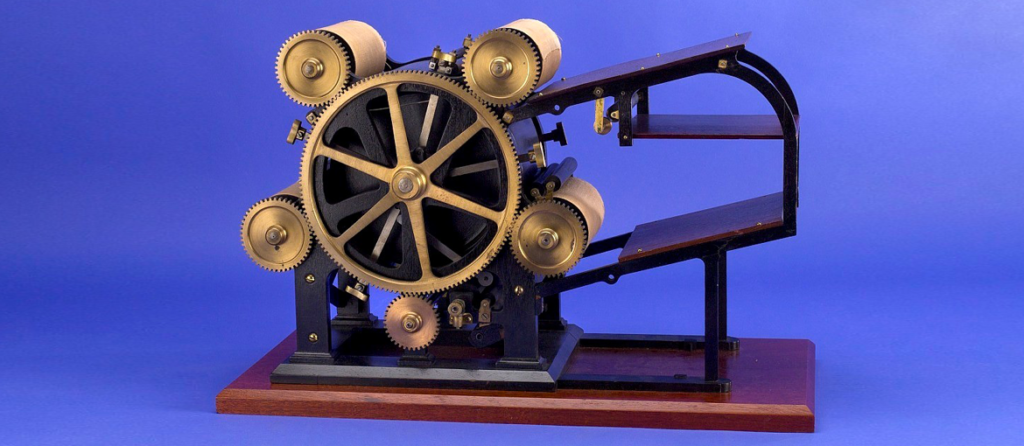Ideas, groundbreaking ventures, notable failures, patents, and inventors are just a few components of the narratives we’re set to share with you. Today, we introduce five devices that have been pivotal in transforming the printing landscape since the 1800s. Typographers, scientists, and inventors have continuously sought enhancements to Gutenberg’s remarkable invention of movable type printing. Particularly from the 19th century onward, inventive devices aimed to streamline printing-related tasks such as page setting, creating typefaces, and the printing process itself.
Among the most impactful innovations that have left a mark and helped shape modern printing include the Linotype, rotary press, offset press, and Lumitype. These inventions, for various reasons, achieved significant success and played crucial roles in defining contemporary printing. They enabled more rapid, efficient, and voluminous printing, ushering printing from the industrial to the digital age.
The Printing Press
The image of newspapers whizzing through giant rollers at high speeds is iconic. Yet, the press, integral to today’s common understanding of printing, was a relatively latecomer in the history of the craft. It wasn’t until the 19th century that the concept of replacing the traditional printing press, which had remained largely unchanged since Gutenberg’s time, began to take shape. The innovation was simple yet transformative: replacing all flat printing surfaces with rotating cylinders, thus dramatically enhancing efficiency by leveraging Industrial Revolution breakthroughs like steam power and later, electricity.
The journey to this innovation was gradual, marked by several insightful breakthroughs. In 1814, Friedrich Koenig, a German inventor, developed the first steam-powered press that combined flat and cylindrical elements, boosting printing speeds from 300 to 1100 sheets per hour. Decades later, Richard March Hoe from America advanced this invention by creating the first real rotary press, eventually integrating continuous rolls of paper into the process.

The very first of such presses was installed at the Times of London in 1870, capable of producing about 12,000 4-page copies per hour. Modern presses can process sheets at speeds of approximately 30 mph, churning out over 60,000 copies hourly.
The Offset Printing Press
The offset printing press, born from an inadvertent discovery, leverages the rotary press mechanism. Utilizing three cylinders, this method transfers the inked image to a rubber-coated cylinder (blanket) before printing it onto the final medium. The accidental invention occurred in 1901 when Ira Washington Rubel forgot to insert paper into his lithographic press, resulting in the image imprinting on the rubber cylinder. Recognizing the superior quality of the rubber-transferred image, Rubel pioneered the first offset press in New York. Despite initial delays due to a catastrophic earthquake and fire, the machine was operational by 1907, marking a significant advancement in printing technology.

The Linotype Machine

For centuries, page setting remained a manual and unchanged process, even with the onset of the Industrial Revolution. The linotype machine, invented by Ottmar Mergenthaler in 1881 , was a groundbreaking development that automated typesetting, quickly becoming a staple in print houses globally. It was a typewriter-like device linked to a miniature foundry, where typing a key would release the corresponding character matrix. Once a line was complete, it was cast in metal to create a single line of type. This innovation drastically changed printing, making it faster and more efficient.
Photocomposition and the Lumitype
The 20th century saw the transition from hot to cold typesetting with the advent of photocomposition. This method did away with metal typesetting in favor of photographic composition on film, which could then be used more efficiently in offset printing. The Lumitype, invented by René Higonnet and Louis Moyroud in 1946, was the first photocomposition machine, revolutionizing how pages were composed and expanding creative possibilities in printing.

The Computer’s Role
Computers ultimately led to the obsolescence of photocomposers by facilitating on-screen page composition. By the 1980s, personal computers enabled anyone to layout documents and print them at home, signaling the start of the digital printing revolution.

As we look back on these transformative machines, one wonders what future innovations will further revolutionize the printing world.

